Audience segmentation plays a crucial role in creating effective marketing campaigns. By dividing your audience into smaller groups based on shared characteristics, you can tailor your messages to meet their specific needs. This personalized approach not only increases engagement but also boosts the success rate of your campaigns.
Understanding your audience is the key to effective marketing. Different people have different needs, preferences, and behaviors. By recognizing these differences, you can design your campaigns to speak directly to each segment. This targeted approach makes your marketing efforts more efficient and impactful.
To begin, it's important to understand what audience segmentation is and how it can benefit your marketing strategy. By knowing the various types of segmentation and how to implement them, you can create campaigns that connect with your audience on a deeper level, leading to better results and improved customer satisfaction.
What Is Audience Segmentation?
Audience segmentation is the process of dividing a broad audience into smaller, more specific groups based on shared characteristics. This could include demographics, behaviors, interests, or purchasing habits. By segmenting your audience, you can create more personalized marketing messages that resonate with each unique group. This increases the chances of your message being well-received and acted upon.
Segmentation allows you to understand the unique needs and preferences of different audience segments. For instance, younger audiences might prefer visual content like videos, while older segments may appreciate detailed articles or emails. Knowing these preferences helps you craft content that appeals directly to each group, making your marketing efforts more effective.
Another key aspect of audience segmentation is its ability to help you focus your resources. Rather than trying to reach everyone with a one-size-fits-all approach, segmentation lets you target your efforts where they are most likely to succeed. This not only improves engagement but also enhances the overall efficiency of your marketing campaigns.
Benefits of Audience Segmentation
Audience segmentation offers several benefits that can significantly enhance your marketing campaigns. One of the most notable advantages is increased engagement. By delivering personalized content to distinct audience groups, you can capture their attention more effectively. Personalized messages are more likely to resonate with recipients, leading to higher engagement rates.
Another benefit is improved customer satisfaction. When you address the specific needs and preferences of each audience segment, your messages feel more relevant and valuable. This relevance makes customers feel understood and appreciated, boosting their satisfaction and loyalty to your brand.
Segmentation also helps in optimizing your marketing budget. By focusing on segments that are most likely to convert, you can allocate resources more efficiently. This targeted approach reduces waste and ensures that your marketing dollars are spent where they will have the most impact. Overall, audience segmentation enables you to create more effective and efficient marketing campaigns that drive better results.
Types of Audience Segmentation
Audience segmentation can be divided into several types, each serving a unique purpose. Understanding these types helps you tailor your marketing campaigns more effectively.
- Demographic Segmentation: This type divides your audience based on demographic factors such as age, gender, income, education, and occupation. Understanding these basic characteristics helps you craft messages that appeal to specific demographic groups.
- Geographic Segmentation: This involves dividing your audience based on their location. It can be as broad as a country or as specific as a neighborhood. Geographic segmentation is particularly useful for localized marketing efforts.
- Behavioral Segmentation: This type focuses on the behaviors of your audience, such as their purchasing habits, product usage, and brand loyalty. By understanding these behaviors, you can tailor your messages to meet the specific needs and preferences of each group.
- Psychographic Segmentation: This involves dividing your audience based on lifestyle, values, attitudes, and interests. This type of segmentation helps you understand the underlying motivations that drive your audience's actions.
By leveraging these different types of audience segmentation, you can create more personalized and effective marketing campaigns. Each type provides valuable insights that help you connect with your audience on a deeper level.
How to Implement Audience Segmentation in Your Marketing Campaigns
Implementing audience segmentation in your marketing campaigns involves a few key steps. Start by collecting data. Gather information on your audience through surveys, analytics tools, and direct interactions. This data provides the foundation for your segmentation efforts.
Next, analyze the data to identify distinct audience segments. Look for common characteristics and behaviors that group your audience into smaller, more specific segments. For example, you might identify a segment of young professionals who are interested in tech gadgets or a group of parents looking for educational products for their children.
Once you have identified your segments, tailor your marketing messages to each group. Create personalized content that speaks directly to the needs and preferences of each segment. Use different channels and formats to reach each group effectively. For instance, younger audiences may prefer social media, while older segments might respond better to email or direct mail.
Finally, monitor the performance of your segmented campaigns. Track key metrics such as engagement rates, conversion rates, and customer satisfaction. Use this data to refine your strategies and make adjustments as needed. By continually optimizing your segmented campaigns, you can achieve better results and drive more meaningful connections with your audience.
Conclusion
Audience segmentation is a powerful tool for creating tailored marketing campaigns. By dividing your audience into specific groups based on shared characteristics, you can deliver personalized messages that resonate with each segment. This approach improves engagement, boosts customer satisfaction, and optimizes your marketing efforts.
Using different types of segmentation, such as demographic, geographic, behavioral, and psychographic, provides valuable insights into your audience. Implementing these strategies involves collecting and analyzing data, tailoring messages to each segment, and monitoring performance to make continuous improvements.
Ready to elevate your marketing efforts? Connect with Kinetic319 for expert guidance on audience segmentation and tailored marketing campaigns. Let us help you understand your audience better and create campaigns that drive real results! Learn more about our advertising and marketing services.

